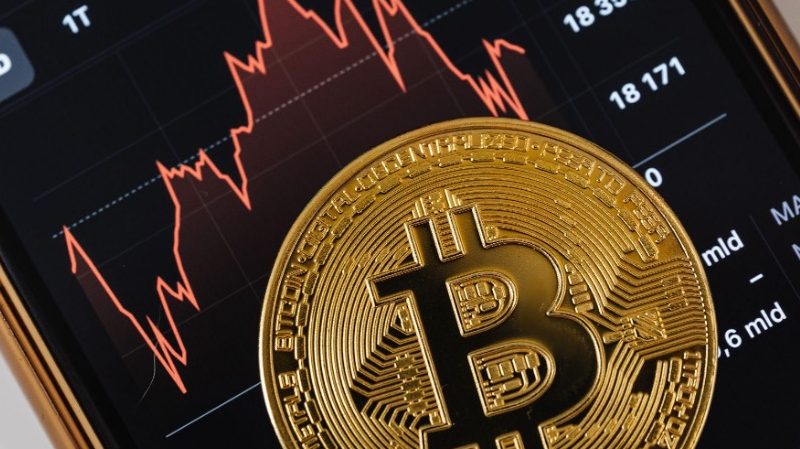
Early 2024, Cynthia Lummis, the junior United States senator from Wyoming since 2021, advanced the Boosting Innovation, Technology, and Competitiveness through Optimized Investment Nationwide Act. This act entails establishing a strategic Bitcoin reserve to cope with unexpected events. The aim is to acquire 1,000,000 BTC over a five-year period that the government must hold onto for twenty years. Satoshi Action Fund’s Dennis Porter confirms 11 states and two nations will introduce the strategic Bitcoin reserve legislation in due time.
Thus far, the Federal Reserve has focused on short-term securities, like Treasury bills and notes, yet quantitative easing has encouraged the most powerful economic institution in the US to purchase mortgage securities and commercial paper. Bitcoin can be used to preserve value, just like gold, making an undisputed champion in global trade, dominating transactions across borders. Donald Trump, who has won the presidency, wants to maintain the current reserves held by the government and even continue to buy Bitcoin, which will then be transferred to the Treasury, placing restrictions on potential future sales.
Traditional investors view Bitcoin as a safe haven asset, so they expect it to retain or even gain value during intervals of economic uncertainty and market turbulence due to its revolutionary approach to wealth storage. The cryptocurrency is on par with gold: both are scarce, decentralized and have been used as a store of value throughout time. Bitcoin is sometimes called digital gold.
Bitcoin isn’t an infinite resource, meaning no new coins will be released after it reaches the limit of 21 million, and this built-in scarcity contributes to its value. The decision to buy depends on your individual perspective and goals. You can use the currencies or the existing crypto assets in your account to buy Bitcoin in just a few taps and even set up recurring buys to automate the process, choosing the frequency. If you learn the basics, you’ll be on the road to investing in no time, so if you’re a total newbie, develop a deeper and more meaningful comprehension of the subject.
The cryptocurrency market is slowly but surely maturing, with digital assets making their way into regulatory frameworks. The US Securities and Exchange Commission approved 11 spot Bitcoin ETFs this year, simplifying investment in the sector by providing investors exposure to the best asset in terms of performance. Institutional investors, endowments, hedge funds, and private corporations are now investing in Bitcoin.
Countless letters were sent to US senators, prompting them to co-sponsor and support the BITCOIN bill, which demonstrates interest is at a record level, most of it coming from individuals who already own cryptocurrency or have exposure to Bitcoin via an ETF. According to Lummis’s proposal, the US Central Bank should leverage existing funds to purchase Bitcoin, identical to its gold allocation.
The network effects, immutability, censorship resistance, capped supply, and decentralization make Bitcoin stand out from the crowd. It complements traditional currencies, such as the dollar, and offers an alternative means of exchange. One day, Bitcoin could replace the dollar entirely. Incorporating Bitcoin into the Federal Reserve’s asset allocation requires an elaborate legal framework that addresses the following areas:
Nations with more volatile currencies actively use Bitcoin and dollars, meaning it would be in the US’s best interest to take an active stake in the former further to consolidate its position as the world’s largest economy.
In Bitcoin’s case, the blockchain is decentralized, so no person or group can change the software that runs on the network. Decentralization presents an attractive solution to bureaucracy, insensitivity to public needs, public inaccessibility, and lack of accountability, to name but a few. Making Bitcoin a reserve asset challenges the established dogma, so it will fail to live up to its potential to create more economic freedom.
Bitcoin represents liberty, power, and independence from government constraint and control, and designating it as a strategic asset could lead to centralization, which means it could be more prone to failures or attacks on critical infrastructure points. Put simply, having the government print more US dollars to buy Bitcoin would make it pointless. If crypto assets are a lenient vehicle to invest, they must trade on their own, without government intervention. By making it an integral part of the US policy, Bitcoin could lose its core qualities, even if its value increases. As a strategic asset, it’s powerful, but the cryptocurrency must be thoroughly managed to ensure the desired outcomes.
The dollar is still a global superpower, enabling the United States to borrow money without difficulty and impose financial sanctions to maximize its economic impact. Bitcoin has considerable value apart from what’s reflected in its forever fluctuating market cap, so integrating it into reserve assets is not only an option but a necessity, ensuring protection against geopolitical and economic uncertainties. As more and more institutions vouch for Bitcoin, its ascension to major policy is a possibility.
The process of confirming new reserve assets is complex as it involves decision-making at the highest levels of government and financial institutions. The president doesn’t have authority over such matters. El Salvador adopted Bitcoin as a legal tender, integrating it into the national economy – regret or reward? You be the judge. In any case, mistakes are opportunities to grow and change.
Maryland Film Festival Announces New Fall Dates for 2025
Stefanie is a local blogger and social media content marketer from Maryland and most recently a wife and a mother. She has an unhealthy obsession with puns, sarcasm and caffeinated beverages.
Thank you for stopping by and hopefully for engaging with Eye On Annapolis with your comments, letters, and opinions both here and on our social channels. There has never been a more critical time for community involvement than today–for any number of reasons. Annapolis and Anne Arundel County are our homes and this site is about the quality of life we all share. It is written for the local community by the local community.
